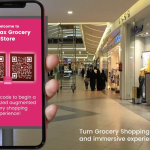Clickbait-y yes, but don’t worry. I actually meant what I said in the title.
You may have come across some of those guides that teach you the correct way to treat a customer and convert them for life. This is not that. While I do intend to cover the basics, what I’m sharing today is the existence of a shortcut that does 70% of the work for you.
If combined with solid fundamentals, you’re likely to muster a cult following.
Why do you want customer advocacy?
A good friend of mine once bought a Hydroflask and would not shut up about how awesome it was. He even connected us all to the Hydrohomie subreddit, a forum dedicated to glorifying the act of drinking water. Eventually, he bought me a Hydroflask for my birthday and said: “Welcome, hydrohomie.”
A customer won over to this point will often start making the item part of their personality. They mention it wherever relevant (guaranteed), and sometimes even where it’s not. Regardless, they become the marketer’s dream – a brand advocate.
Someone you’ve converted to your brand’s religion and who preaches it on sandy beach and mountain top.
But how valuable is the brand advocate really? How much effort should a brand dedicate to converting customers into zealots?
Here are the facts:
- Studies demonstrate that existing customers are 50% more likely to try new products and spend an average 31% more than new ones.
- Even better – it’s much easier to retain an existing customer than acquire a new one (6X to 7X easier according to the White House Office of Consumer Affairs).
- A 5% increase in customer retention can drive profits up by 25%.
- Last but not least, customer acquisition costs are only going to keep increasing.
Conclusion: loyal customers are your biggest assets.
Of course, you need to strike a balance but experienced managers say that retention is too often overlooked.
Building loyalty
So, you want to focus on the loyalty game now. Careful, it is a delicate one.
It can take months or years to build up, and one bad experience might lose you the customer for good. In fact, PwC says customer volatility is at an all-time high.
The most basic competitive stage for a brand is its pricing, but now that most industry secrets are out, the battlestage is emotional. It is akin to winning someone over in love – you have to be attentive, patient, competent, generous and trustworthy.
Let’s look at what happened with customer experience.
The pandemic forced brands to improve their online customer journeys, making them more seamless, effective and available than ever. People got used to the convenience and don’t want to do without it as they go back to brick-and-mortar.
They want an in-store, digital experience. And there is one technology that bridges the gap between both worlds.
Augmented reality is here.
Yes, it’s been around for a while. We’ve all seen the Snapchat filters that turn your face into a cute puppy-human.
What I mean is that it’s now available through everyday apps thanks to the advent of WebAR. It used to be that developers had to create app-specific experiences that couldn’t be used without downloading the app in question.
Simply put, it’s easy to deploy now.
What does it do for a brand? It allows them to connect with every consumer throughout the shopping experience, providing product information, guiding them through the store based on their needs and highlighting points or promotions of interest on the way.
Because it encourages you to log in, it also allows brands to personalize recommendations, reward loyalty, distribute prizes and more. The key here is that the connection was made more seamlessly than usual. A quick scan of the QR code as you walk in, sign in with Facebook or Google, move on to the good stuff.
From there, the live connection generates real-time, actionable data for you to make the most well-advised and timely recommendations ever witnessed without a store clerk. Imagine they pick up a set of forks, and you point out a 30% reduction on the associated set of knives before they walk out. Something like that.
This level of personalization is what people learnt to expect and love about online shopping, and this is how you deploy in store. Are you convinced? Well, I hate to keep you here but it’s not even over. Have you ever tried on 5 different pants, not found the one and just given up?
AR allows people to sample products like clothes, makeup or outsized objects in a quasi-frictionless manner. A Harvard study found that customers that could sample lipsticks with AR spent 50% at the stall and tried 7.5 times more products.
In conclusion, when well-crafted, AR is a customer experience holy grail. On top of that, AR shopping is still new to most of us – a great experience will brand your name in their mind.
Don’t forget the fundamentals
AR is convenient, flashy and effective. It helps you reach deep levels of service and recommendation personalization. However, a lot more goes into loyalty.
You need to be vocal. Express your brand’s values loud and clear to help people identify with you.
You need to build trust. Deliver on product promises and be available when things go wrong.
You need to understand your customer. I mean truly. The said and the unsaid. Many swear by ethnography, a method that uses informal interviews and observation of the subject in its undisturbed, usual activities to learn more about them.
You need to be generous. Make them feel like they got more than expected, and treat them like more than a source of revenue. What goes around comes around.
You need to reward. Reward programs are typically considered difficult to sign up to and participate in. Tech like, but not limited to, AR can help you overcome that.
Cover these, upgrade to next-gen tech and take over.








